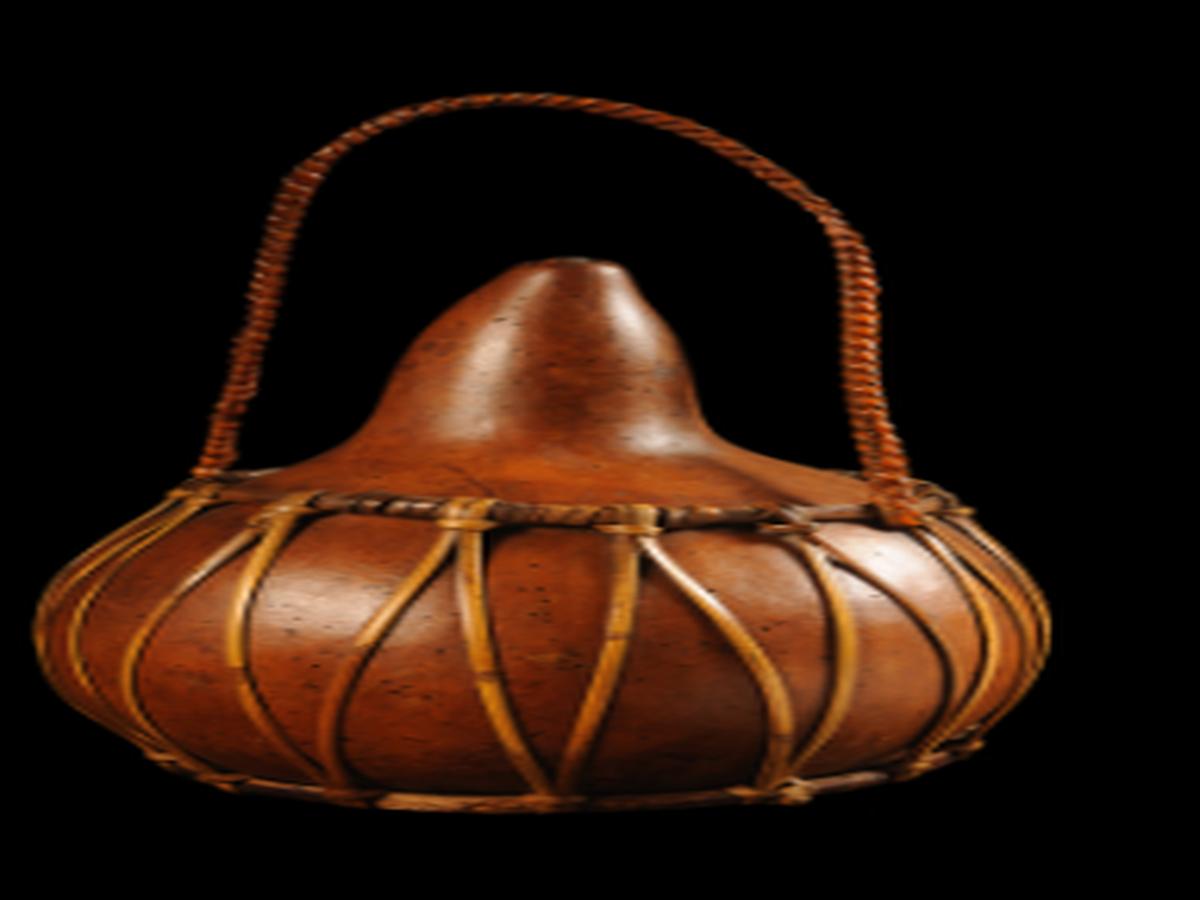State
Tribe Name
Art Type
short description
The Dried Gourd Pot is a ceremonial container both traditional and in the symposium of the Rongmei Naga tribe, essentially residing in Manipur, primarily in Tamenglong and Noney districts with some presence in the borders of Nagaland and Assam. This graceful item is a showcase of both the creative use of natural material by the Rongmei tribe and their down-to-earth ceremonial customs. Being made of a dried gourd, the pot is naturally light and strong. Gourds, once hollowed and dried, were traditionally used in many tribal societies for storing liquids because these gourds also resisted porousness and were durable. The cane strip decoration applied to the outer surface of the pot was usually woven into intricate patterns that would have meanings of some sort, perhaps symbolical or tribalistic. The woven cane strips also make the structure even more firm and rigid.
Thumbnail

Filter Postion
Left
Filter Background
Off
Theme
Filter Header Image

content
Image

description
The Dried Gourd Pot is a ceremonial container both traditional and in the symposium of the Rongmei Naga tribe, essentially residing in Manipur, primarily in Tamenglong and Noney districts with some presence in the borders of Nagaland and Assam. This graceful item is a showcase of both the creative use of natural material by the Rongmei tribe and their down-to-earth ceremonial customs. Being made of a dried gourd, the pot is naturally light and strong. Gourds, once hollowed and dried, were traditionally used in many tribal societies for storing liquids because these gourds also resisted porousness and were durable. The cane strip decoration applied to the outer surface of the pot was usually woven into intricate patterns that would have meanings of some sort, perhaps symbolical or tribalistic. The woven cane strips also make the structure even more firm and rigid.
The neck of the pot is reduced and small, suitable for pouring or sipping, and it has been furnished with a handle that the user can weave and carry. Such pots are traditionally used in ceremonies for offering rice beer or other ritual offerings to reflect the ideals of lodgment, fellowship, and respect among the Rongmei people. At the present, this would no longer be a mere object for utility use but come to symbolize for its cultural identity and very much sustainable living. Examples of such ceremonial vessels now survived in institutions like the Indian Museum, Kolkata, which provide significant insights into the material and socio-cultural life of the Rongmei Naga tribe.
The neck of the pot is reduced and small, suitable for pouring or sipping, and it has been furnished with a handle that the user can weave and carry. Such pots are traditionally used in ceremonies for offering rice beer or other ritual offerings to reflect the ideals of lodgment, fellowship, and respect among the Rongmei people. At the present, this would no longer be a mere object for utility use but come to symbolize for its cultural identity and very much sustainable living. Examples of such ceremonial vessels now survived in institutions like the Indian Museum, Kolkata, which provide significant insights into the material and socio-cultural life of the Rongmei Naga tribe.
Image Mode
landscape
promoted
On
Verified
Off
